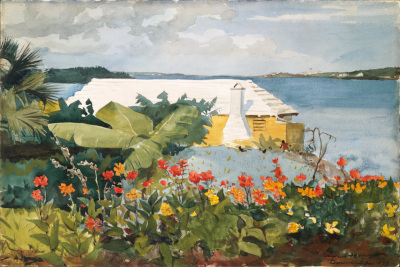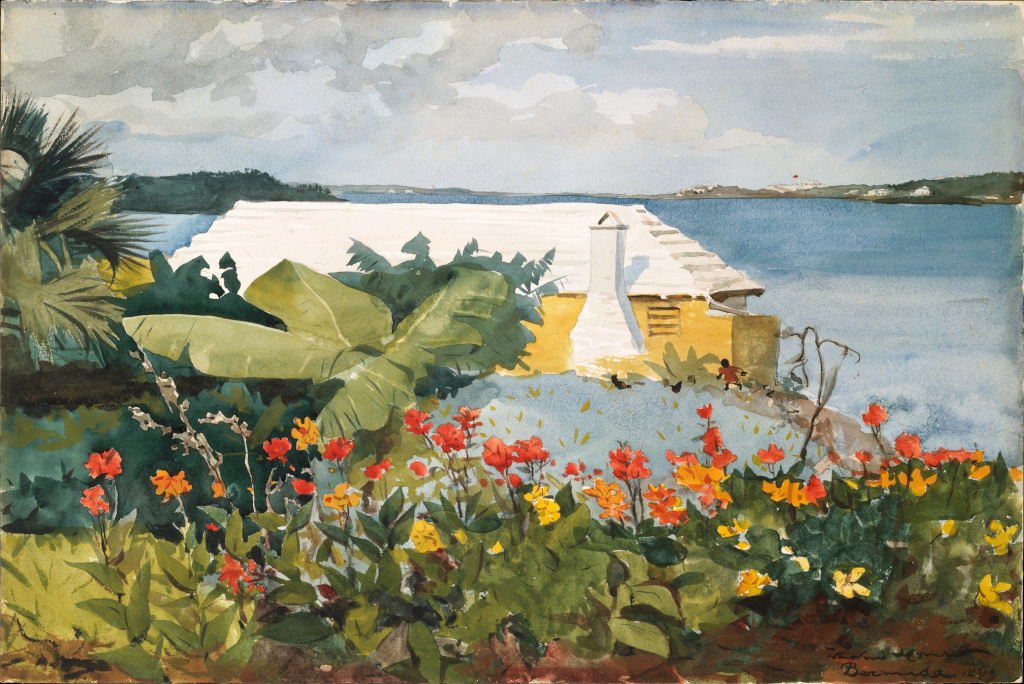Flower Garden and Bungalow, Bermuda was one of a number of watercolour paintings produced on this island by Winslow Homer in the late 19th century. This particular piece can be found today at the Metropolitan Museum of Art, USA.
The piece was produced in 1899 and exhibited for the first time soon after. The composition features a row of flowers on the edge of a garden, with a home lying just behind. Several tall palm trees come in from the left hand side and in the distance we can see an open expanse of sea, with some hills on the other side. The horizon is lifted up in this painting to allow more of the foreground to be included, meaning the sky is a relatively small slither of paint across the top quarter of the painting. The overall atmosphere of this piece is bright and upbeat, capturing the beauty of the island of Bermuda, which was somewhere the artist liked to visit in his later years. Homer would cover the good and bad of island life, with other depictions focusing on the aftermath of various hurricanes, and the destruction that they would often bring. Seascapes were common in his career and he tackled this genre in many different ways, always searching for innovation and a unique approach.
One can immediately identify Flower Garden and Bungalow, Bermuda as a watercolour painting, due to the style of this medium and how it normally leaves blocks of colour which interact with each other around the edges. We do know that the artist used woven paper for this artwork, and probably added initial detail in graphite before then painting over the top. It is listed as being 35.4 cm by 53.2 cm in size, which is in line with the use of a sketchpad, where the completed artwork is then later removed and sold separately. It is listed as having been from the Amelia B. Lazarus Fund, 1910 when it arrived into the ownership of the Met. This impressive institution hosts a wide selection of work from Homer's career, covering drawings, watercolours and also many oil paintings, and they also feature a great number of other prominent American artists here as well.
The artist is known to have visited locations such as these from around 1884 and enjoying the climate during the American winter. He found that watercolours was an ideal medium for this region and so most of his paintings of the Bahamas would be in that format. In one winter alone he is known to have produced around twenty five watercolours whilst on a single trip to the Caribbean and by now he was starting to really feel at home here. Despite being a proud American who loved to focus on his own nation, it seemed that in later life he had something of a calling to look elsewhere for inspiration. He remained keen to avoid just reproducing European ideas and so was comfortable with depicting life in the Caribbean as a means to expanding his oeuvre. Across his different trips to this region, we can also pinpoint stylistic changes that occured within his work.





